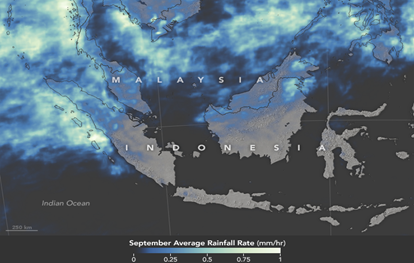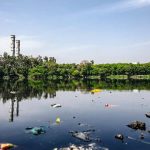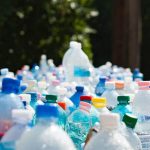Named and recognized by fisherman off the coast of South America, El Niño which means little boy or Christ Child in Spanish is an event wherein the pacific waters start warming up unusually increasing the sea surface temperature. The la Nina event is in fact opposite to El Niño, it usually brings in a cold phase in the Pacific Ocean.
Both events are naturally occurring, a part of earth’s global climate system also called as El Niño Southern Oscillation, or ENSO in short. They occur on average every few years lasting up to around a year or two. But in recent times they have been occurring more often, which makes scientist question why these events are increasing in strength and in frequency. The major reason could be climate change. For us to grasp how climate change can be responsible, let us first understand the science behind these events in simpler terms.

Every 2 to 7 years trade winds which usually blow towards the west change their direction or tend to slow down. The reason for this change in pattern is yet unknown. Because of this the warm water which is used pile up in western Pacific Ocean is now pushed towards the eastern side. These bring heavy rains and extensive flooding in South American countries and drought and forest fires in wet tropical regions like Indonesia and Australia. In La Nina, the situation is reversed, heavy rainfall in eastern pacific countries and droughts and fires in western countries.
Although 20 climatic models from different research institution suggest that the pace of these events of how frequently these events occur might not change as the global temperature increases but they are likely to become more and more intense. The explanation lies in increasing ocean temperatures which makes it easier for the warm water to push more strongly towards the east pacific region as there is less amount of cool water to maintain the balance in the ocean. These events are observed to become extreme since the 1970’s and evolution of industries and rise in global warming. 1982-83, 1997-98 and 2015-16 are known to be some of the stronger such events as called as Super El Niño’s.
Extreme El Niño events can have worldwide impacts. Along with economic loss due to drought conditions, extreme flooding events as well as intense forest fires, they are even known to change the biodiversity and ecology in some areas on this planet other than usual physical events like rise in seas surface temperature, change in sea surface heights, ocean colour etc

El Niño greatly affects the mortality of corals and health of mangroves. Warm waters are related to increased number of hurricanes and typhoons. This creates a pressure on coastal mangroves; causes a lot of destruction to the coral reefs. The warm water from super El Niño events is also responsible for bleaching out the corals of their beautiful and vibrant colours because changing temperatures can disturb the mutually beneficial relationship between corals and zooxanthellae which are the micro-organisms responsible for the colours and vibrancy of corals.
Meanwhile on terrestrial islands, native species struggle to resist against the changes these events bring to their lands. Some invasive species find it much easier to survive in such conditions which become a matter of survival for native species. Brazillian ecosystem has lost 64% of dung beetle species during the forest fires caused by 2015-16 El Niño events.
“Seabirds on the Galapagos lost their nests in flooding events during the 1982–1983 El Niño˜ causing reproductive failure for the duration of this wet episode”
How do we know that these events are happening and how do we know how the ocean surface temperatures are changing? Well one way is to monitor these huge masses of water through satellites. Scientists often measure sea surface temperatures to check whether the pacific is in El Niño state. This is confirmed when the average temperature remains more than 0.5 degree Celsius above the normal average in succession for 5 months.
“Sea surface temperatures are measured from space by radiometers, which detect the electromagnetic energy (mostly light and heat) emitted by objects and surfaces on Earth. In the case of the oceans, satellite radiometers—such as the Advanced Very High-Resolution Radiometer (AVHRR) and Moderate resolution imaging spectroradiometer (MODIS) are used.”

El Niño and la Nina change not only sea surface temperature, but also the sea surface height too which can be studied using satellites named Jason-2 from NASA’s jet propulsion laboratory. The animation below shows changes in sea surface heights during the 2015-16 El Niño event.
Along with ocean level changes, satelliites are also used to monitor the terrestial level impacts of El Niño and La Nina like forest fires which can be detected by instruments like TERRA MODIS and Global precipitation measurement (GPM) which is utlised to capture areas with high precipitation. The image below is an example of GPM’s capability to measure rainfall in an El Niño event.


With context to India and other Asian countries, El Niño has known to change the monsoon cycle which affects agriculture and crop production as these countries are heavily dependent on rainfall. And as these events worsen, scientific models implies that temperatures in India could go up to 45°C. Hence, the monitoring of these indicators and use of early warning system for ENSO is essential and helps in planning and strategizing mitigation measures to reduce impacts in such areas.
Pratiksha Chalke
Senior Analyst – Biodiversity (GIS)
References
References
- https://www.pmel.noaa.gov/elnino/what-is-la-nina#:~:text=The%20Origin%20of%20the%20Names,or%20Christ%20child%20in%20Spanish.&text=La%
20Ni%C3%B1a%20means%20The%20Little%20Girl. - https://www.jagranjosh.com/general-knowledge/what-are-the-differences-between-el-nino-and-la-nina-1511951289-1
- https://earthobservatory.nasa.gov/features/ElNino
- https://www.nasa.gov/feature/goddard/2016/after-strong-el-nino-nasa-sees-return-to-normal
- https://www.weather.gov/mhx/ensowhat
- https://www.earthsciweek.org/classroom-activities/your-own-el-nino
- https://theconversation.com/el-nino-has-rapidly-become-stronger-and-stranger-according-to-coral-records-115560
- https://coral.org/blog/el-nino-will-it-hurt-coral-reefs/#:~:text=Scientists%20predict%20that%20this%20year’s,of%20those%20in%20U.S.%20waters.%E2%80%9D
- http://www.sfu.ca/~amooers/papers/Meuser_etal_ElNino_EoB_12.pdf




